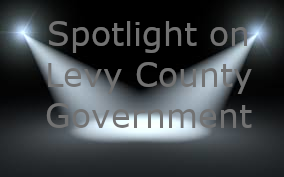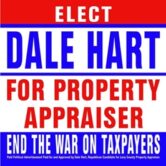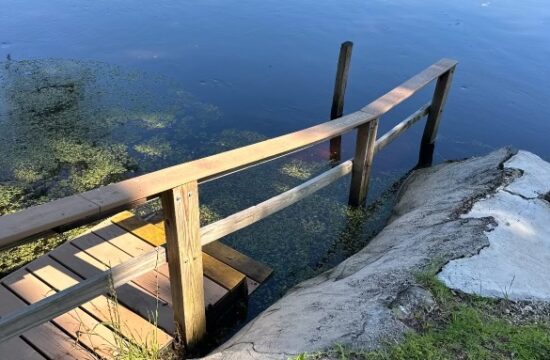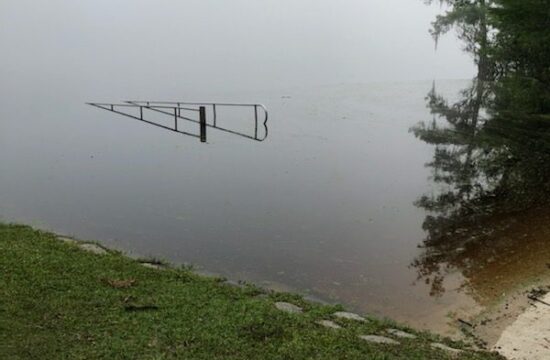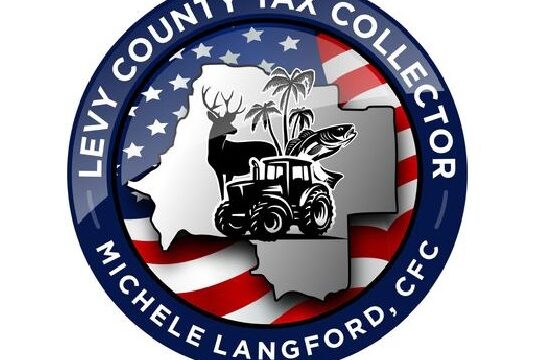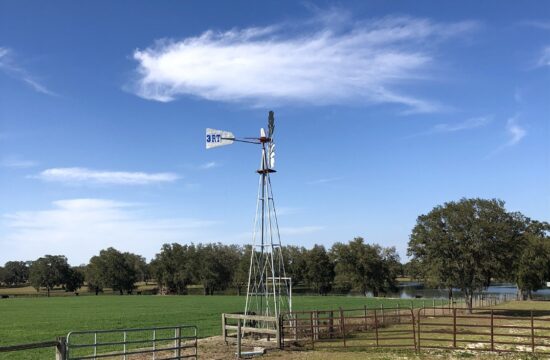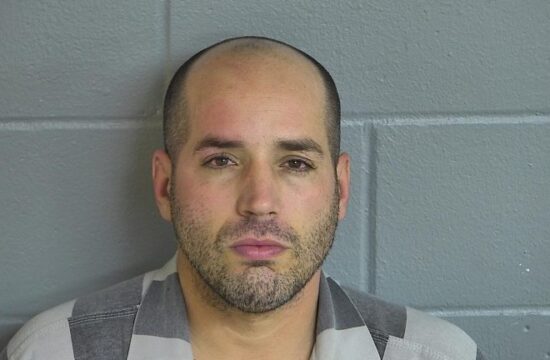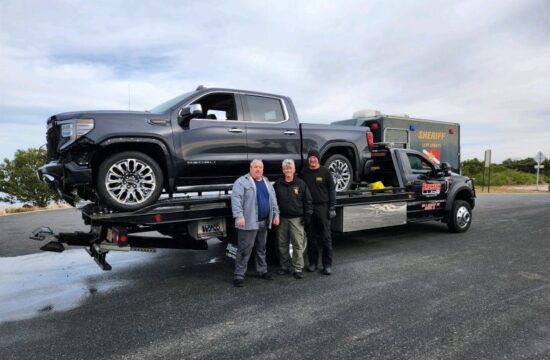By Terry Witt – Spotlight Senior Reporter
It’s difficult to imagine an elevated version of U.S. 19 carrying traffic through Chiefland at speeds of 60-65 mph, possibly at rooftop level, but it’s one of the concepts the Florida Department of Transportation unveiled Thursday when discussing the future of the highway.
DOT and a consulting firm, Atkins, held a public meeting in Chiefland to gather input from citizens appointed to the Community Work Group on what they would support or oppose as far as potential options for achieving the free-flow of cars and trucks through the city.
Free-flow of traffic means the cars and trucks passing through Chiefland wouldn’t be slowed down or stopped by traffic lights, slow-moving vehicles, or vehicles that suddenly make a U-turn on U.S. 19. The second option for achieving free-flow in Chiefland would be constructing a bypass truck route around one side of the city or the other.
Greg Garrett, who works for Atkins as a senior project official, said the cleared right-of-way for an elevated version of U.S. 19 in Chiefland would be roughly 200 feet wide and that’s a conservative estimate. He said it would mean clearing 50 to 100 feet of additional right of way on both sides of U.S. 19 to build the elevated highway.
“In terms of a solution, it looks like a 200-foot right of way. That’s an elevated structure with frontage roads tucked underneath it. Now you got this elevated highway going through Chiefland,” Garrett said discussing the ‘through-town’ option for creating free-flow of traffic. “You would also be looking at the through-town option that would be vehicles traveling at 60 to 65 mph.”
No Build Option
A third option, which is always on the table for DOT projects, is building nothing at all. The so-called no-build option is often the most popular with residents who don’t want to see their small towns impacted by DOT highway projects they don’t want.
A fourth option that was briefly discussed was building overpasses at major intersections to allow secondary street traffic to pass over U.S. 19 to reach the other side of the highway without the use of traffic signals.
Communications Issues
There were communications issues associated with the meeting. There were more officials at the meeting from Atkins and DOT than there were residents from Chiefland. There were 12 DOT and Akins officials present, but only 10 residents from Chiefland including those in the working group. The large room at the Tommy Usher Center was nearly empty except for the working group up front.
Apparently, part of the reason for the low turnout was that the Greater Chiefland Area Chamber of Commerce was holding its annual banquet at the same time DOT was hosting the working group meeting. At least three of the working group members, Chiefland High School Principal Matthew McClelland, City Commissioner Lewrissa Johns, and Prentice Spann were reportedly committed to the chamber banquet. None of the city commissioners attended the DOT meeting.
No Audience Input
Another communication problem resulted from the lack of opportunity for audience members to make comments. DOT officials said they made it clear in public announcements before the meeting that the only people who would be speaking would be working group members along with DOT and Atkins officials. Atkins employees worked as moderators at the meeting.
DOT advertised the gathering as a public meeting. It was indeed a meeting in a public forum, but residents in the audience – and there were only a few of them – seemed puzzled about why they couldn’t participate. They sat for most of the meeting listening to the working group before most began to file out of the Usher Center. There was an offer made at the very end of the meeting for the audience to comment. They made no comments.
DOT set up three tables near the stage and divided the working group members among the three tables. After introducing themselves and discussing the concept of free-flowing traffic, Atkins moderators began interacting with the working group members at the three tables. The three groups started talking at the same time. It sounded like a high school cafeteria at lunchtime. The front row of the audience was at least 20 feet away from the tables. It was difficult to listen to the conversations.
Hybrid Meeting
DOT officials said the meeting was a hybrid of what they have done in the past. They said the state hasn’t really started its Project Development & Environment Study (PD&E) to examine how to create free-flow traffic conditions on the highway. This was an extra layer of public input, a pre-meeting before the PD&E starts. Questions were asked of the participants concerning what they liked about Chiefland, what they wanted to preserve, what was great about Chiefland etc. All three table groups said they like the small-town atmosphere, the closeness of being like a family, and they wanted to keep their small-town businesses. The results of the conversations were announced as the meeting wound down toward the end.
There was agreement among two of the groups that they didn’t want an elevated U.S 19 highway built through Chiefland. Those two groups said they would prefer to see the state build some type of bypass rather than an elevated highway. The one group that seemed to support the through-town concept consisted of businessman Stoney Smith and Nature Coast Business Development Council Executive Director Scott Osteen.
Researching Impacts
DOT is planning to conduct research about the potential impacts of the elevated highway and the bypass highway. Agency officials say they don’t have a good handle on how many business properties along U.S. 19 would be impacted by clearing a full 200 feet of right of way for an elevated highway. Police Chief Scott Anderson told Atkins officials that construction of an elevated highway with 200 feet of cleared right of way along U.S. 19 in Chiefland would be an economic disaster for the city because most of Chiefland’s property tax revenues come from the business community, not from residents. He said if 30 businesses are lost and perhaps another 25 or so lose their parking lots, the loss of property tax revenue to the city would be catastrophic.
Smith expressed concern about a bypass potentially cutting through farmland on the east side of town if the bypass is built on that side of the city. DOT officials said if the bypass were constructed through farmland, they would work to find alternatives to reduce the amount of property split by the bypass road. In some state highway projects, DOT constructs underpasses through farmland to allow farmers to go from one side of their property to the other. Atkins officials noted early in the meeting that the most densely populated residential areas outside the city limits are on the west side of town. The east side is where farmland is more prevalent.
Promise of Access
DOT officials have twice promised Spotlight that if a bypass were constructed to route traffic around Chiefland, the state would continue allowing traffic on U.S. 19 to enter the city’s business district from the north and south ends of town. They say the promise hasn’t changed. The subject of allowing traffic to enter Chiefland either wasn’t specifically discussed at the working group meeting or if it was discussed, it couldn’t be heard over the din of the roaring air conditioning system and three tables of local residents talking at the same time. But assurances were given to Spotlight again that the state wouldn’t starve the city’s business district by blocking access to the city on the north and south ends of U.S. 19. The state may also exercise the option of building off-ramps from the bypass road to give motorists an additional means of accessing gas stations, restaurants, and motels in Chiefland. The bypass, in theory, allows fast-moving through-traffic to avoid the traffic lights and go on their merry way as they drive past the city.
Strictly Conceptual
Much of what was discussed at Thursday’s meeting was conceptual. Until all the data is gathered by DOT and put into a readable form for analysis, the elevated highway and bypass will remain concepts for discussion and not much more than that. DOT said the public probably won’t be invited into the process during the current study, but residents will be invited to comment when the PD&E study has formally begun and public meetings and hearings are scheduled. But the truth is the public in Chiefland and throughout Levy County doesn’t trust DOT and probably never will.
DOT officials said traffic levels in Chiefland will build to two or three times their current levels by the year 2050 even if there are no improvements made to create free-flow of traffic. The end result of allowing traffic congestion and traffic accidents to get worse on U.S. 19 is that the state may have to take more drastic measures to address the situation in the future. Accident levels on U.S. 19 in Chiefland are well above state averages.
Suncoast Parkway
There was no mention during the meeting, at least none that could be detected in the audience over all the noise, of DOT’s plan to extend the Suncoast Parkway toll road to connect with U.S. 19 at Red Level in northern Citrus County. Connecting the Suncoast Parkway to U.S. 19 would add a considerable amount of traffic to U.S. 19. The extra traffic would impact Inglis, Chiefland, Otter Creek, Cross City, Perry, and beyond. One DOT official did mention that the state’s plan is to make free-flow traffic improvements from U.S. 19 at Red Level in northern Citrus County to I-10 near Tallahassee.
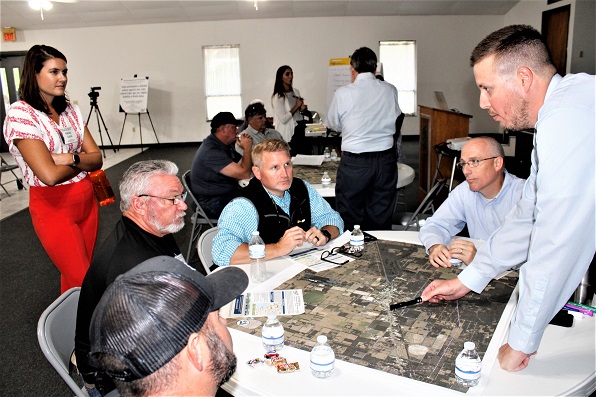
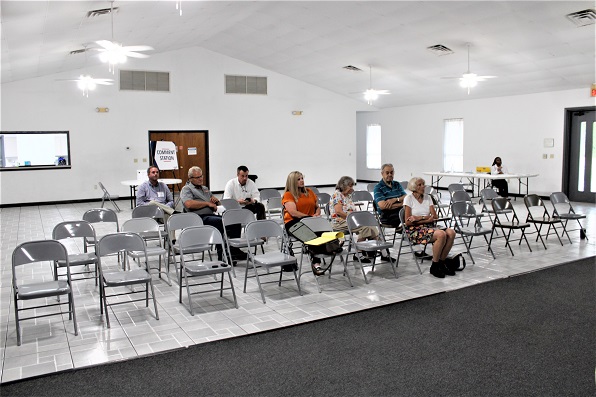
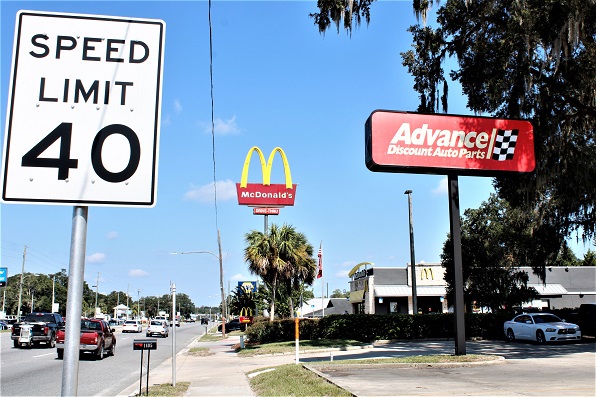
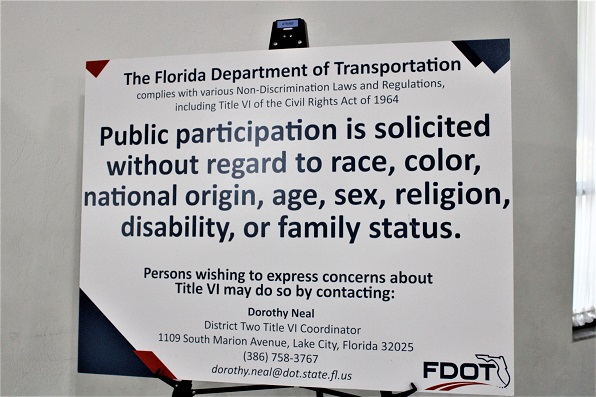
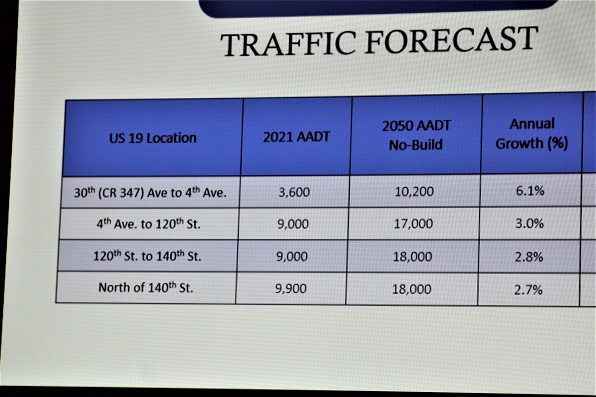
——————-
Enterprise Reporting September 15, 2023; Posted September 16, 2023
